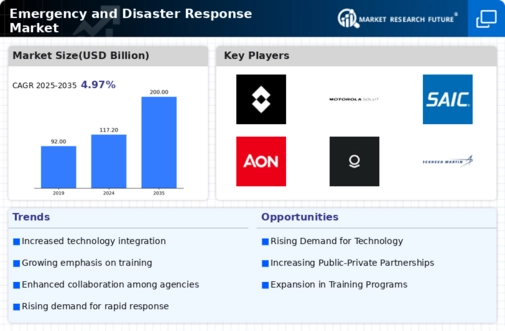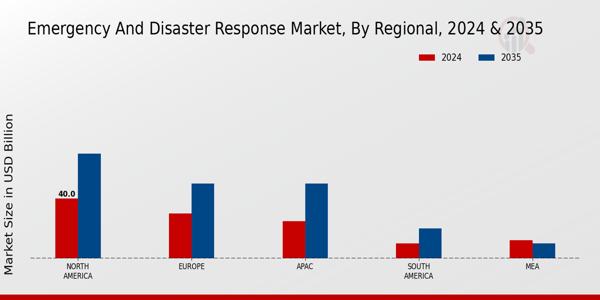Emergency And Disaster Response Market Summary
As per MRFR analysis, the Emergency and Disaster Response Market was estimated at 117.25 USD Billion in 2024. The Emergency and Disaster Response industry is projected to grow from 123.08 USD Billion in 2025 to 199.91 USD Billion by 2035, exhibiting a compound annual growth rate (CAGR) of 4.97 during the forecast period 2025 - 2035.
Key Market Trends & Highlights
The Emergency and Disaster Response Market is evolving towards greater technological integration and community involvement.
- Technological integration is reshaping response strategies, enhancing efficiency and effectiveness in operations.
- Community engagement initiatives are increasingly recognized as vital for improving disaster preparedness and resilience.
- Public-private partnerships are becoming more prevalent, facilitating resource sharing and collaborative response efforts.
- The rising frequency of natural disasters and urbanization are driving demand for robust emergency response systems.
Market Size & Forecast
| 2024 Market Size | 117.25 (USD Billion) |
| 2035 Market Size | 199.91 (USD Billion) |
| CAGR (2025 - 2035) | 4.97% |
Major Players
FEMA (US), International Federation of Red Cross and Red Crescent Societies (CH), United Nations Office for the Coordination of Humanitarian Affairs (UN), World Health Organization (WHO), National Aeronautics and Space Administration (US), DHL Supply Chain (DE), Boeing (US), Lockheed Martin (US), General Dynamics (US)


















Leave a Comment